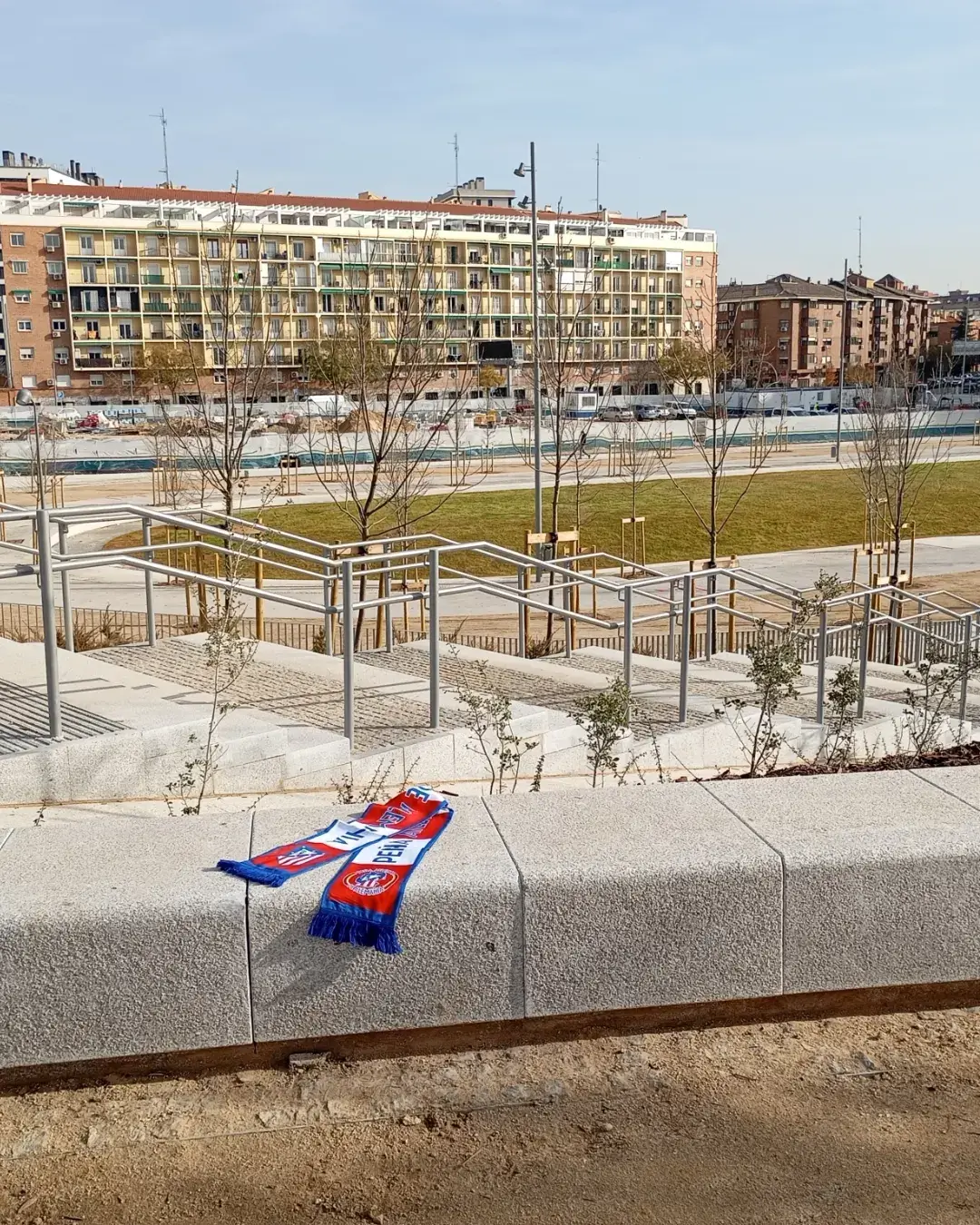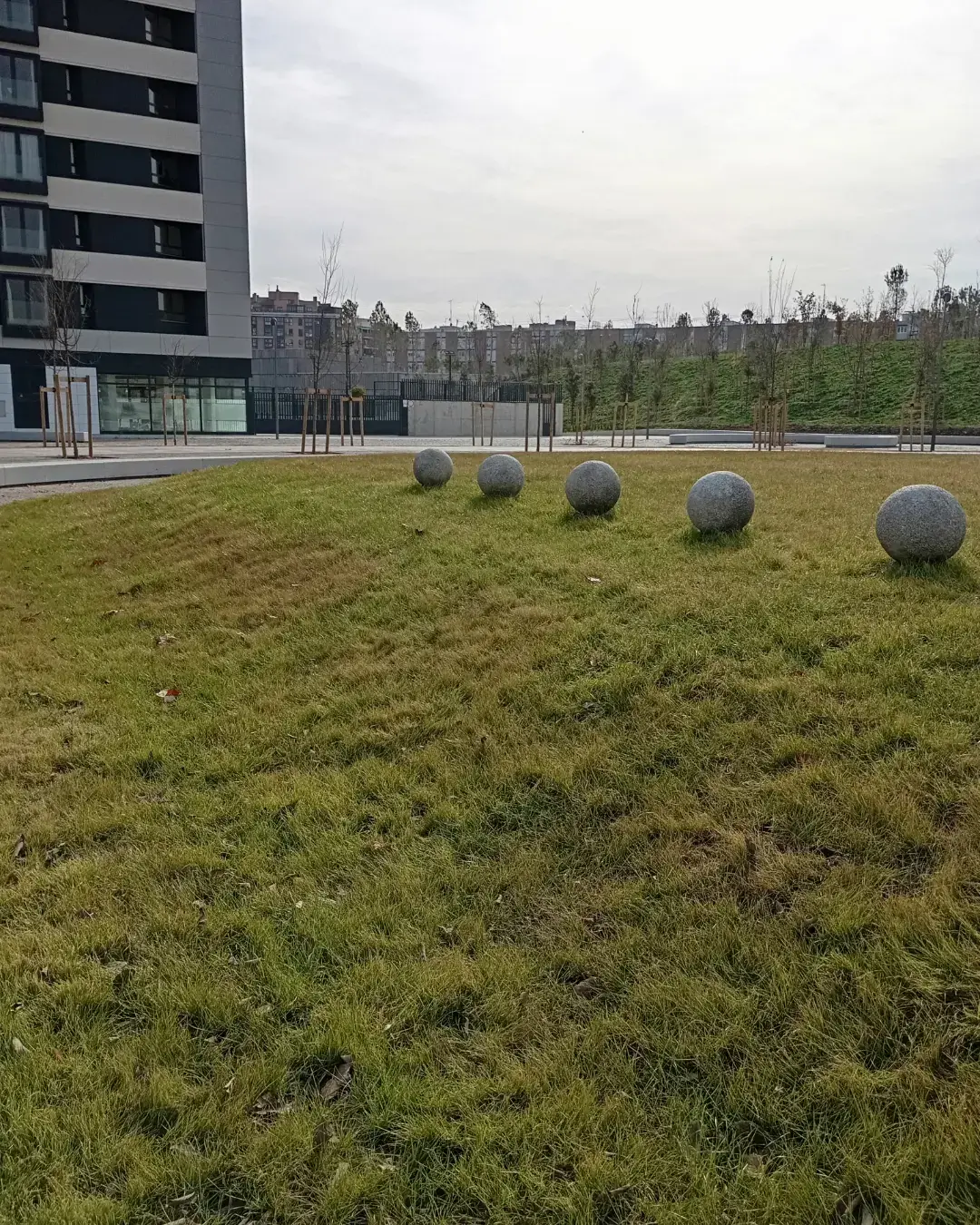ETERNAL VICENTE CALDERÓN

It is a fact that our beloved Vicente Calderón Stadium will always be remembered and missed. However, this time it won’t share the fate of the Stadium Metropolitano, which left no plaque to mark its location.
On December 9, 2024, the Madrid City Council officially inaugurated the Atlético de Madrid Park, built over the covered section of the M-30 in the Mahou-Calderón area. This park occupies the very space, next to the Manzanares River, where the legendary Vicente Calderón Stadium once stood, the iconic home of Atlético. This green area, which includes several tributes to the stadium, concludes the transformation of Madrid Río and fills the physical void left by the stadium’s demolition, though nothing can fill the emotional void.
The opening of the new park was attended by the Mayor of Madrid and devoted Atlético fan, José Luis Martínez-Almeida; our president, Enrique Cerezo; and our CEO, Miguel Ángel Gil. They were joined by Paloma García Romero, delegate for Public Works and Equipment; Javier Rodríguez, president of the “Nuevo Mahou-Calderón” Compensation Board; Atlético legend Adelardo Rodríguez; and Roberto Solozábal, president of the Atlético de Madrid Legends Association. Several legends who made history at Vicente Calderón also attended this special event. Among them were Manolo Sánchez Delgado, Juan Carlos Pedraza, Miguel Ángel Ruiz García, Francisco Javier Bermejo, Luís Pereira, and Ramón “Cacho” Heredia, alongside members of the club’s social committee and staff, all gathered for this emotional occasion.
During the event, a time capsule containing various items from the old Vicente Calderón Stadium was buried. These historic objects were placed under a plaque marking the center of the former field, commemorating the 51 years of the stadium’s history. José Luis Martínez-Almeida, Miguel Ángel Gil, Enrique Cerezo, Paloma García Romero, Adelardo Rodríguez, and Roberto Solozábal were tasked with placing items into the capsule, including a stadium seat, a stone, a piece of turf, posters from the first and last matches held there, photos of the first and last goals scored at the Calderón, a jersey from the stadium’s 50th anniversary, a sector map with ticket prices from the final match, and an Atlético de Madrid flag. A small engraved slab, perhaps too modest and hard to find, marks the stadium’s silhouette, while another nearby plaque features a football design.
Once the capsule was buried, the delegation toured the new park, stopping at a viewpoint over the Manzanares River. There, José Luis Martínez-Almeida, Enrique Cerezo, and Javier Rodríguez addressed the attendees. Our president reflected on the mixed emotions of returning to the site where Vicente Calderón once stood and the many memories Atléticos lived there during countless thrilling football evenings. Meanwhile, the Mayor of Madrid emphasized the importance of this project as the culmination of Madrid Río and as a tribute from the city to a location rich in Atlético symbolism.
The park features a long, grassy field with circular ends reminiscent of a Roman circus, evoking the playful and entertaining spirit of the old football ground. Surrounding the field are three rows of trees. Additionally, the area includes an informal, non-standardized three-lane running track with porous pavement, responding to requests from local associations and sports and academic organizations in the district.
Our president, always deeply involved in matters concerning Atlético de Madrid, made sure to visit the new park and pay tribute to what was once our home. Despite the park’s beauty, the feelings of longing and sadness are inevitable. A piece of our Atlético heart lies buried in that time capsule.




